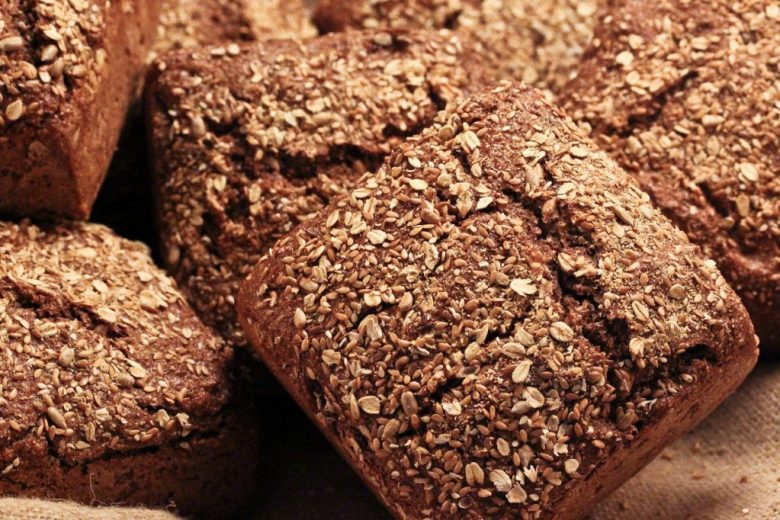Soakers and Soaking
Soakers, scalds, and pre-cooked additions serve to improve the water absorption of the dough and thus, improve the shelf-life of the bread. In practice, soaking is most often used, which in my opinion does not always lead to the best result. The temperature and standing time of the various soaking processes are always related to one another and the rule of thumb is:
“The higher the water temperature, the more water will be absorbed”
The questions of whether to use a soak or a scald is not only a question of better water absorption since these processes also have an impact on the crumb texture. Boiled grain and seeds produce a very soft crumb, while soaking creates much more bite in the crumb.
In order to prevent extraneous fermentation, the storage temperature should be kept under 25°C if the soaking time is longer than 5 hours. Soakers kept overnight (especially with rye meal) tend to spontaneously ferment. The best results are achieved when part of the salt amount in the recipe is added to the soaker.
At soaking temperatures of 70-95°C, a neutral smell and taste is achieved and the starch is already partially gelatinized. This limits the possible proportion of the soaked ingredients to 45-50% addition to the main dough.
Baking influences of soakers, scalds, and pre-cooked additions:
Soaker:
- 30-60% soaker content in the dough
- Hydration (TA) in the main dough: 175-178
- Hydration (TA) of the soaker: 200
- Standing time: 3-20 hours (spontaneous fermentation is controlled with the addition of salt)
- Bread taste: somewhat strong
Scald:
- 35-45% scald content in the dough
- Hydration (TA) in the main dough: 178-181
- Hydration (TA) of the soaker: 250
- Standing time: 2-3 hours
- Bread taste: aromatic
Pre-cooked addition:
- 30% pre-cooked content in the dough
- Hydration (TA) in main dough: 181-185
- Hydration (TA) in the pre-cooked process: 300
- Standing time: 3-5 hours
- Bread taste: Slightly bitter
Sunflower seeds, pumpkin seeds or nuts should also not be added to the dough without pre-soaking. Since the water absorption of seeds and grains is very different, I have put together the following list with guide values:
Guide values for water absorption in seeds and grains:
- 100g Sunflower seeds + 50g Water
- 100g Pumpkin seeds + 50g water
- 100g Flax seeds + 150g water
- 100g Sesame seeds + 50g water
- 100g Walnuts + 50g water
- 100g Soy + 100g water
- 100g Hazelnuts + 50g water
- 100g Almond + 50g water
- 100g Wheat bran + 200g water
- 100g Potato flakes + 400g water
- 100g Semolina + 100g water
- 100g Wheat meal + 100g water
- 100g Rye meal + 100g water
- 100g Spelt meal + 100g water
- 100g Millet +240g water
- 100g Quinoa + 100g water
- 100g Buckwheat + 100g water
- 100g Polenta + 150g water
- 100g Oatmeal + 100g water
- 100g Dried and finely ground bread crumbs + 250g water
- 100g Old bread + 50g water
Fermentation of soakings
It becomes really exciting to make these soakers when you add sourdough. The acid improves the soaking, the hydration of the dough and, in addition, a larger bread volume is achieved. It should be borne in mind that the dosage must be lower due to fermentation and acid formation.
Bread from the mill – Recipe
For a dough weight of 2422g / 3 pieces, each 807g (14x14cm)
(Recipe from Melanie Sch.)
Sourdough:
- 300g Fine wheat meal
- 300g Fine rye meal
- 30g Rye starter
- 750g Water
Hydration(TA): 225 DT: 26-29°C Maturity time: 15 hours
Soaker:
- 100g Coarse rye meal
- 80g Sunflower seeds
- 50g Flax seeds
- 30g Sesame seeds
- 300g Water 70°C
Hydration(TA): 225 Soaking time: 2-3 hours
Main dough:
- 1380g Mature sourdough
- 560g Soaker
- 300g Fine rye meal
- 50g Grape seed flour
- 100g Water
- 22g Salt
- 10g Yeast (dissolved in water)
Instructions:
- Mix with a cooking spoon the sourdough, soaker, and other ingredients into a homogenous dough.
- Cover and allow to soak for 15-20 minutes and then once again mix well with the spoon. Should the dough appear too firm, additional water can be added!
- Then the dough is divided into the baking pans with a dough card.
- Spread the dough out with wet hands and dredge with a mixture of seeds.
- Then allow to proof -approx. 60-70 minutes
- The bread is baked at 250°C with steam.
- Release the steam after 7 minutes and turn the oven down to 195°C.
- The total baking time should not be less than 70 minutes.



